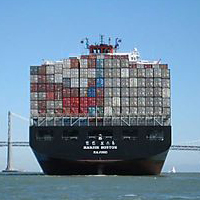Shippers have been told not to lose sleep over the recent, short-lived jump in spot freight rates but to focus instead on ways to mitigate the risk of a sudden capacity crunch later in the year, according to analyst Drewry Maritime Research.
East-west trades have been in the ascendency of late. Drewry’s Hong Kong-US west coast container rate benchmark, as published in its Container Freight Rate Insight, leapt 28% in the first week of the year.
The benchmark rose US$396 to $1,832 per feu and successfully sustained this level into the second week. Transpacific Stabilisation Agreement (TSA) carriers have been successful in forcing through their intended $400 per 40ft container rate increases.
Shipping lines have had similar success on the Asia-Europe trade. The World Container Index benchmark rate between Shanghai and Rotterdam soared 41% in the first two weeks of January to $1,335 per feu.
The increase of $391 per feu was in line with carriers’ intended peak-season surcharge (PSS) of $400 per feu.
Buoyant volumes ahead of the Chinese New Year factory closures later this month have filled ships, causing most carriers to roll containers, prompting aggressive rate hikes.
Martin Dixon, Research Manager of Drewry’s Container Freight Rate Insight, said: “However, the big question is how sustained the rates revival will prove, and what this means for 2012 transpacific contract rates.
“Once the pre-Chinese New Year rush recedes, spot rates will retreat to December levels, unless carriers take action to remove surplus capacity from the trade.
“Shippers would be well advised to wait a few weeks before commencing contract negotiations.”
Most transpacific freight contracts run from May to April. In 2011, shippers and carriers settled at contract rates at or below the previous year’s level. This year shippers can expect to secure much lower shipping costs, said Drewry, given the weak state of the container shipping market.
“However, shippers should beware,” warned Dixon. “Locking carriers into low freight rates today may hinder surety of supply in the future.”
Drewry expects freight rates to rise sharply in the second half of the year as cash-burn forces carriers to slash capacity.
“A repeat of 2010, when freight rates rose and space availability was highly restricted, seems inevitable,” added Dixon. “Drewry strongly recommends shippers look at the benefits of index-linked contracts to mitigate these dangers.” Source: www.ifw.net




